A front door is more than an entrance to the home. It’s also a security feature, a first impression, a hint at the home’s interior and a brilliant opportunity to show off some personality. So naturally, choosing the perfect front door colour is a big decision.
But what do you need to know before taking to your door with a tin of paint? Well, it turns out that choosing a smart hue is easier said than done, so to help you make the perfect choice, we’ve teamed up with the experts at Hume Doors to step you through the process.
Consider your surroundings

Just as builders and architects take the environment into account when planning a project, try turning to your surroundings if you need help choosing a paint colour for your entrance door.
If you are surrounded by trees, green and brown are an instant ‘yes’. Likewise, if you’re near the water, shades of blue work beautifully.
Another great idea is to look at features like decking hues or the colour of your brick paving to choose a compatible colour for your door.
How much light does the door get?
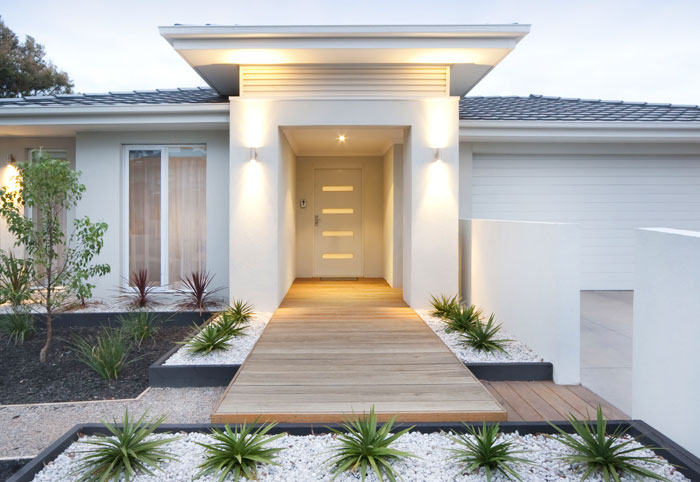
When choosing your paint colour, it’s important to consider how it looks in different types of light – from overcast days to full sun, dusk, partial shade and underneath a light fitting.
If you’ve ever painted the interior of a house, you’ll be familiar with putting paint swatches in every room to get an idea of how the paint colour sits in various types of light. Do something similar with your front door and use swatches to test the colour at different times of the day and make sure it’s a winner in all kinds of light.
Take trends into account

In some cases homeowners have their hearts set on a door colour from the get-go, but when decision-making becomes tricky, trends can help to pinpoint the right colour.
Dulux Aquanamel® is a range of water-based enamels that are perfect for entrance doors because it is chip-resistant and hard-wearing. But the best bit? It’s available in a huge range of trending colours.
Here are some of the most popular colours and shades for front doors in Australia:
White Doors

The seamless pairing of a white door on a white weatherboard Hamptons-style home is both fresh and timeless, but it also works incredibly on coloured homes or any neutral backdrop, such as grey and greige.
Black Doors
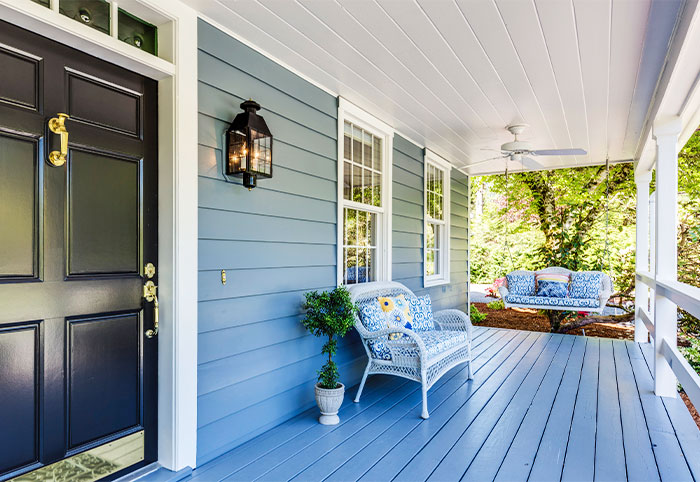
Like white, black pairs pretty superbly with almost any style and colour of the house, which is why it’s such a popular choice in 2023.
But, before you commit to a black entrance door, it’s critical to be aware that dark colours with a low light reflectance value are prone to becoming damaged. A black door requires careful consideration and a chat with the experts – more on that below!
Green Doors
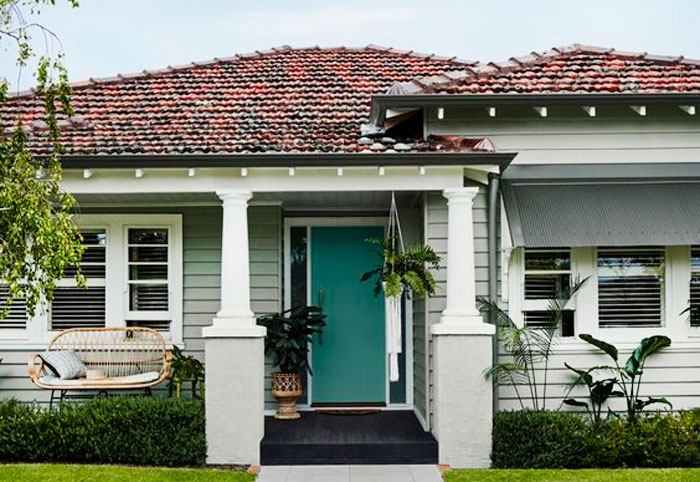
With more and more Australians embracing the colours of nature in their renovations and builds, it comes as no surprise that green doors are trending. Deeper shades of green make more impact, whereas muted tones like the one shown above provide a subtle accent colour. It makes a great backdrop for Christmas wreaths too!
Blue Doors
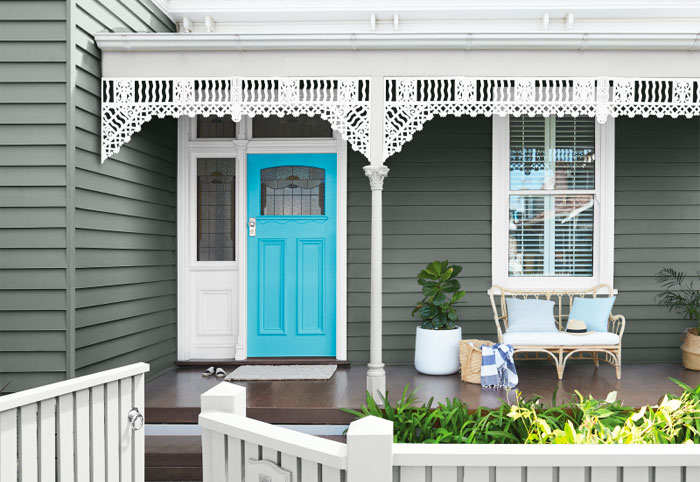
Blue is both refreshing and calming and a clear favourite when it comes to door colours in Australia. From bright playful blues like the one depicted above to deep navy, the colour works especially well with neutral homes in shades of white and grey.
Dabble in some colour theory
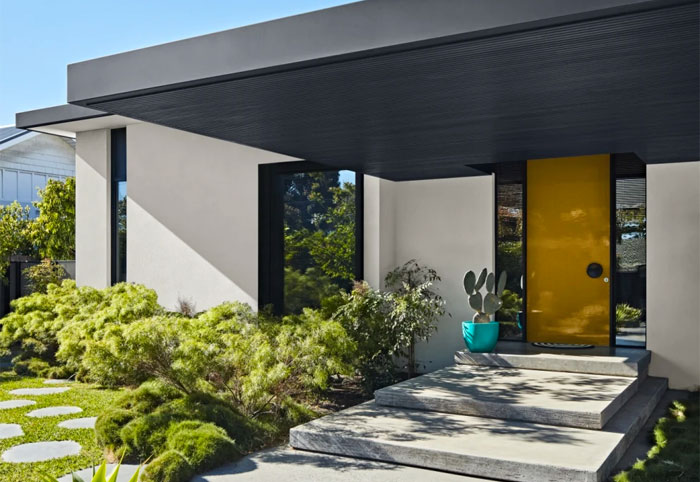
If you’re worried about choosing a door colour that will clash with your home, cast your mind back to art class a million years ago and the good old colour wheel. These are some of the principles that home designers follow when matching a front door colour to the entrance of a house:
Monochromatic Colours
These refer to different shades of the same colour. The colour of your door may be a different shade to the ground cover or cladding, for example.
Analogous Colours
These are colours that sit directly next to each other on the colour wheel, for example, blue and green, or yellow and green. Are you surrounded by a lot of greenery? A blue or yellow door will pop!
Complementary Colours
These are colours that sit opposite each other on the colour wheel. An example of this would be a sky-blue house with an orange door. Complementary colours make the biggest impact and are one of the more adventurous choices when it comes to front doors.
Shades
Remember, black and white aren’t actually colours, they’re shades, so they don’t appear on the colour wheel. But the beauty of a neutral house (and the reason it’s so popular) is that almost any colour door works perfectly with it.
Light reflectance value matters!

Not all colours are created equal when it comes to front doors. Some of the most common issues with front doors are warping and cracking caused by the sun and heat. But, with the right choice of colour and paint, these problems can be averted.
All paint colours have a light reflectance value (LRV), which refers to the amount of light the colour reflects. (You’ll usually find the LRV on paint swatches and/or the paint brand’s website.)
A high LRV means the paint reflects more light and is better protected against sun and heat damage. Dark colours like black absorb more UV rays than lighter colours, which is why they have a much lower LRV than light shades.
According to the experts at Hume Doors, a semi-gloss paint with an LRV of 50-100 is ideal for an entrance door. You should also ensure you have adequate overhead protection. This gives your door the best chance at a long life – and it also helps guarantee your door’s warranty.
Hume Doors is a partner of the Making HOME renovation series.
Top image source: Vaucluse Premium Door via Maine House Interiors.
Head over to Episode 3: Exterior to see how we used doors to transform our Sydney reno!

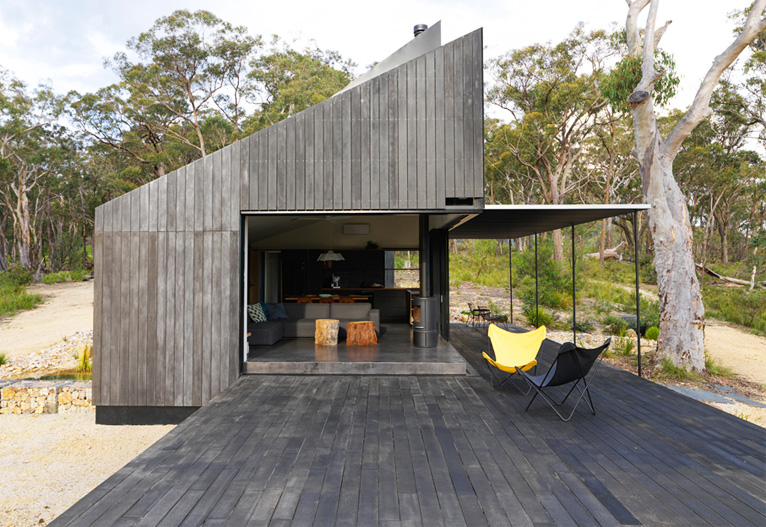
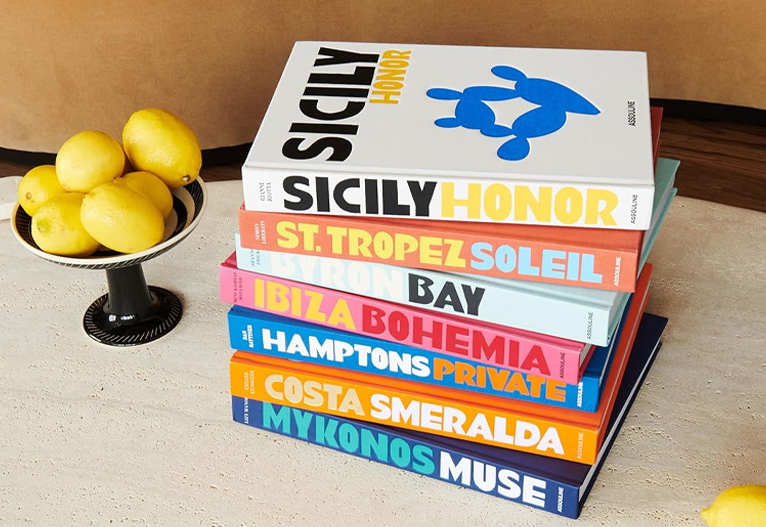

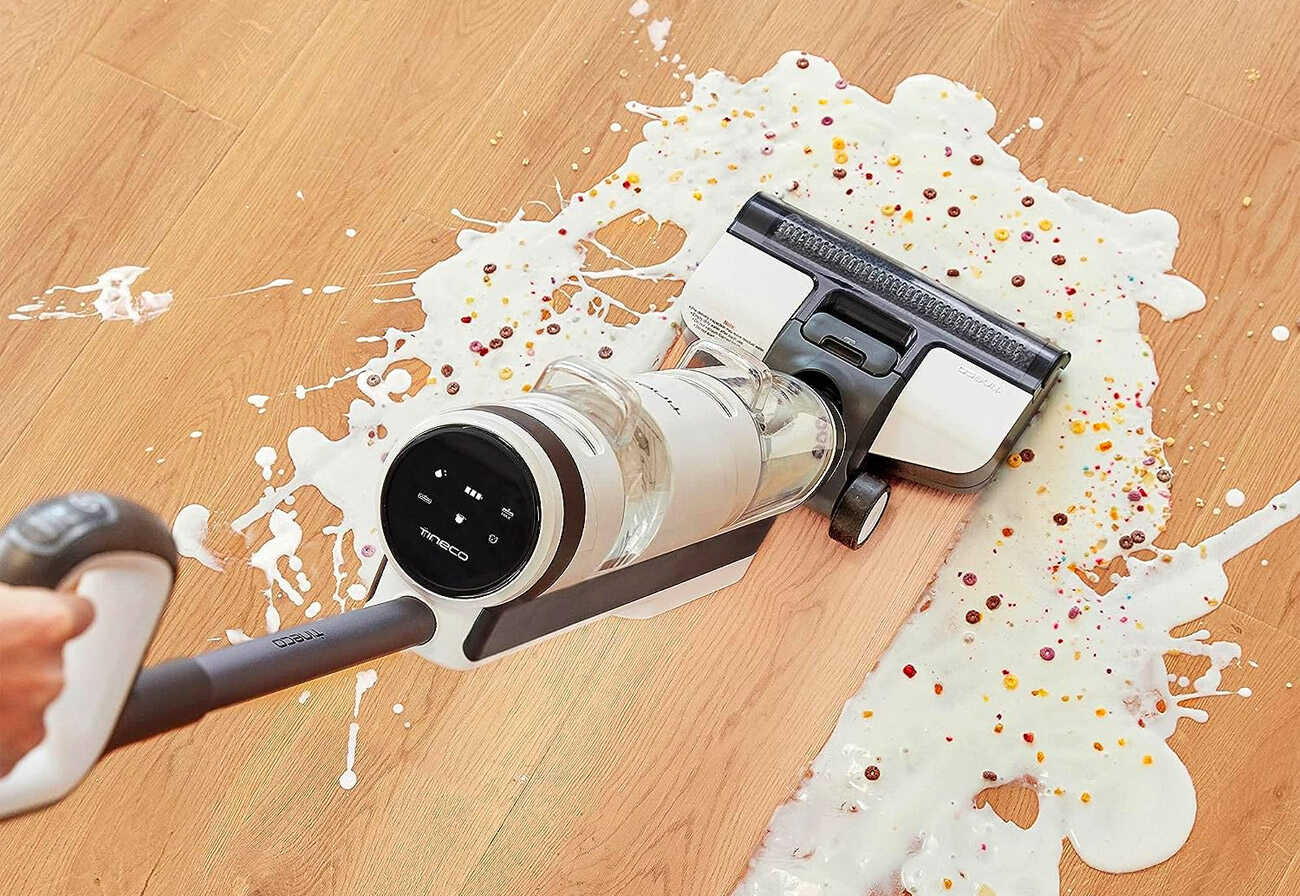
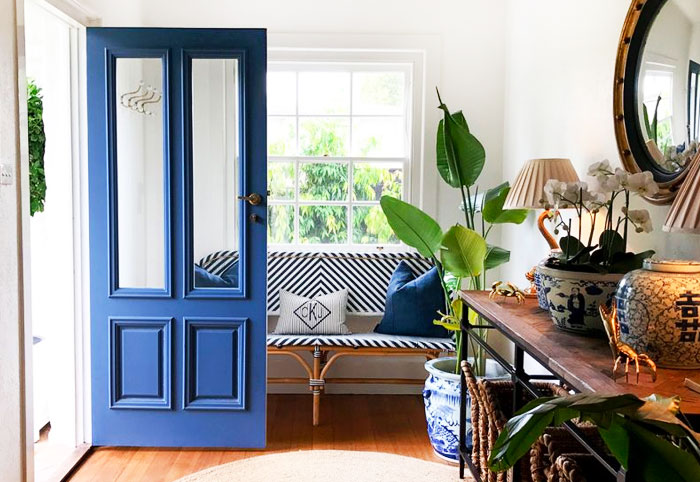
-

-
-
Mum4232, NSW
- 08 Sep 2025
-

-
-
MH514261, NSW
- 22 Aug 2025
-

-
-
MH513363, QLD
- 09 Aug 2025
-
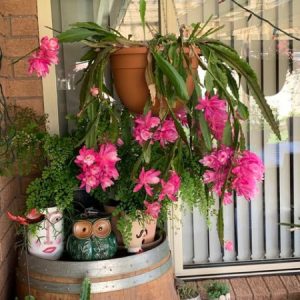
-
-
TraceyGail, NSW
- 07 Aug 2025
-

-
-
ChiWren, QLD
- 14 Jul 2025
-

-
-
MH513363, QLD
- 14 Jun 2025
-

-
-
misha, VIC
- 12 Jun 2025
-

-
-
MH514261, NSW
- 11 Jun 2025
-

-
-
ChiWren, QLD
- 19 May 2025
-

-
-
loves_coffee_and_wine, SA
- 19 Mar 2025
Post a commentTo post a review/comment please join us or login so we can allocate your points.